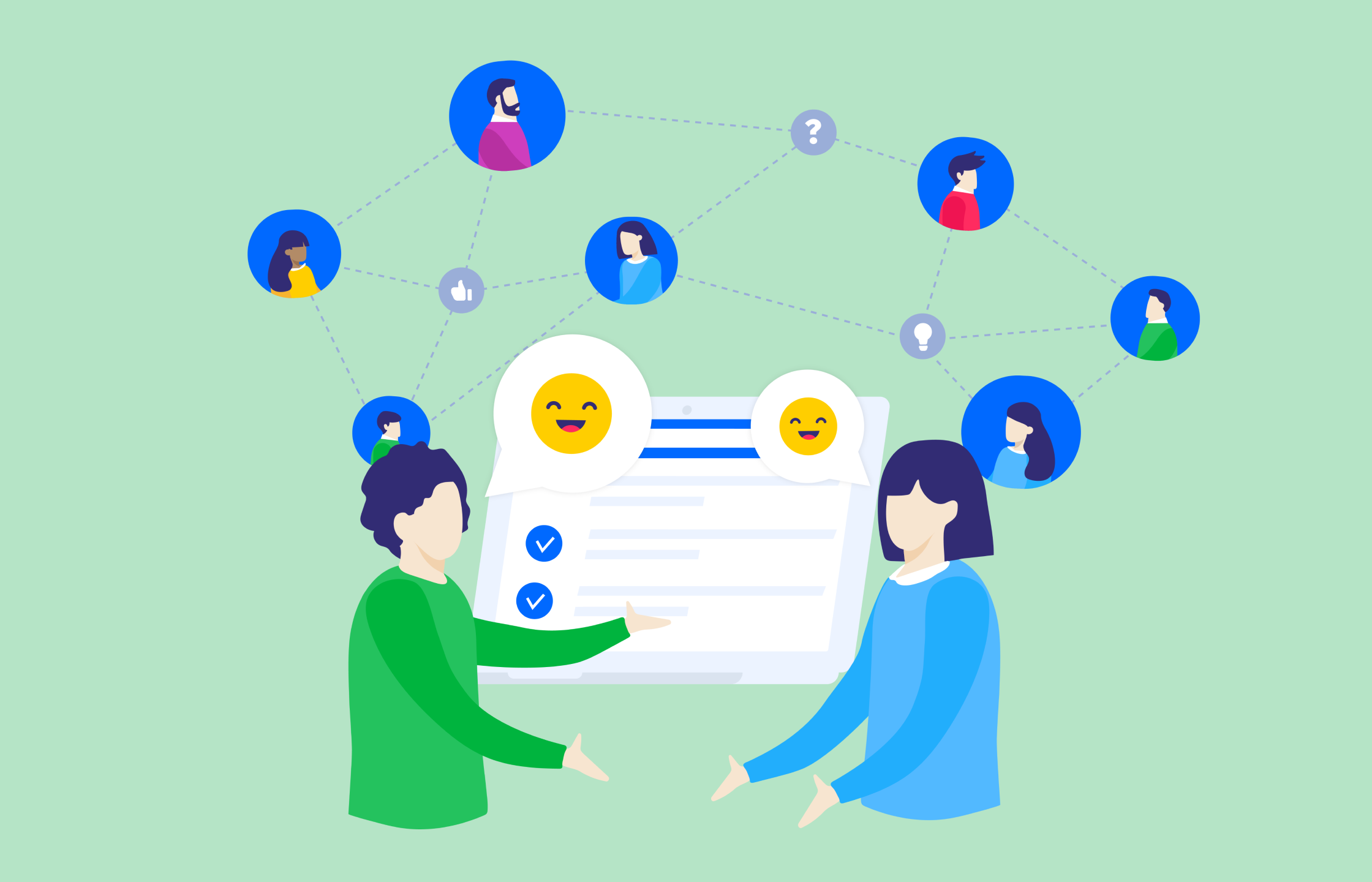Customer engagement is at the heart of Customer Success strategies in B2B Software companies. Why? Not only is it a key indicator for customer retention, increasing engagement is a sure-fire way to get feedback on your product while facilitating the sharing of best practices between your users.
That said, driving customer engagement doesn’t just happen overnight, and there are many different ways you can go about it. Of course, you could use groups on social media, plan events for your customers, or send emails/surveys to your users. Then again, these methods can be difficult to arrange, costly, and, in the case of social media, you can run into complications given that you do not own the customer created content.
One way to combat these issues, boost your Customer Success efficiently and increase customer health is to engage your users through an online community.
Here are 3 reasons why:

1. You’ll increase customer engagement
Let’s start with the obvious. Online communities give your existing customers a transparent platform to interact and share best practices with each other, and your business. What’s more, communities foster the feeling that customers are part of an interactive and interesting group that allows them to learn from each other and drives engagement.
The benefit of this? As a general rule of thumb in SaaS companies (though it is not always the case) an increase in customer engagement through online communities results in a better customer experience, which leads to higher customer satisfaction and likelihood of success. And this will ultimately lead to an increase in customer retention and more revenue.
Create how-to’s, pull together inspiring case studies and use the events you organize as content engines on your community too. Distribute all of this great stuff across your central customer community and make sure to push it to users with relevant, personalized notifications.
You can also use gamification within your community to award customized badges to super-users to boost competitiveness and camaraderie among your community. Members come for the content, and stay for the community.
What’s more? Customers can vote on the best answers in a community which not only increases interaction, it reduces pressure on your customer support teams by allowing customers to self-serve and help each other. Which leads us to….
2. You’ll scale self-service effectively
Peer-to-peer conversations make online support better and more scalable, and they offer a human touch that the latest ‘cost-reduction’ technologies like bots and AI will always struggle to replicate—at a fraction of the resource cost of customer service conversations.
Of course you’ll always try to build your products in such a way that your users enjoy easy on-boarding and friction-free usage. But let’s face it—there will always be questions. You’re probably already well aware that the preference towards self-service has skyrocketed in the past few years and we see this continuing to grow.
In fact, according to this report from Forrester, a massive 73% of consumers say that valuing their time is the most important thing companies can do to provide them with good customer service. What does that mean? Essentially, your users are perfectly happy to self-serve if the process is made easy and effortless for them.
That’s where the beauty of your online community comes in!
All of your customers combined probably know a lot more about your product than you think—and many of them are willing to share their expertise. So offer your community as a first line of contact. If the answer isn’t there, and people start asking, get your in-house experts involved, and have their answers benefit many users well into the future, rather than just the one user who is asking right now.
The result? We see that close to 50% of customer support questions can actually be answered by peers easily. On the Infoland Community for example, customers respond to 40% of community questions, which can greatly benefit your support team and improve the user experience. For those tricky questions that can’t be answered on your community, ensure your customer base always has the option to talk with support or CSM. Enabling this mechanism can deflect 25 to 50% of the questions currently hitting your support team. Be sure to integrate your community with your CRM or ticketing system such as Zendesk to seamlessly escalate difficult community questions to your support team.
Don’t forget, with a community you’re not just helping existing users to self-serve. Because community content ranks so highly with Google, a large majority of a community’s traffic typically comes from organic search—usually in the range of 60% to 80%. Prospective customers looking to self-educate can also be helped here.
Remember, the self-service content on your community isn’t limited to one standalone destination. Use your platform’s API to inject posts, knowledge articles and support documents into your apps, websites or software products. Be sure to facilitate self-service at every stage of the customer journey.
3. You’ll get valuable insights into your product
Using your community to announce updates and get feedback from your users on your product is a great way to ensure your roadmap is heading in the right direction and you are building a product that suits the needs of your users.
Here is an example of Software company, Webroot, using their community to update users on feature requests and gather feedback from their user base:

An online community allows you to identify first-hand the most (and least), popular user requests—arming you with concrete business propositions from your customers to bring to your Product team. This, in turn, allows your product team to prioritize requests based on solid community data, all the while encouraging a more streamlined and data-driven relationship between your Customer Success and Product team.
Of course as a Customer Success Manager you can’t listen to all of your customers at once, but it’s necessary to stay close to them to prioritize what feedback and insights to deliver to your product team.
Improve product adoption
Successful product adoption is integral to long-term success for B2B software companies. The on-boarding stage is your chance to demonstrate the value your product offers your customers—thereby boosting retention, avoiding churn and building revenue. Here are just a few of the ways your community can support product adoption:
- Let your super users take the pressure off your support team by providing answers to other users during product adoption.
- Make announcements. Using your community to make ‘pre-announcements’ to your users can go a long way to alleviating users’ fears around product changes. People fear the unknown—enlighten them using your community!
- Direct new user questions to your community and avoid your product or support teams answering queries over and over again. The more questions that are answered on your community, the larger your knowledge base becomes.
- Increase peer-to-peer collaboration in your community, especially when it comes to adopting new product features. Encourage users to share and discuss their real-life use cases and offer tutorials, best practices and how to’s for specific scenarios.
There you have 3 concrete ways an online community can boost your Customer Success efforts and go a long way to helping you retain customers. An online community is an ideal way to unite your users, allow them to share best practices and get feedback on your product. Increasing customer engagement and increasing self-service has never been so easy.
For 10 steps to kickstarting a successful community in B2B Software download our eBook here.



